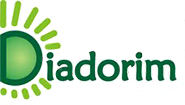Call for vol. 21, no. 1, 2025
Linguí∫tica (Qualis CAPES A1) invites researchers to submit, until November 17th, 2025, their articles for its volume 21, issue 1.
Theme: The field of deafblindness, social-haptic communication, and linguistic constructions
Guest Editors: Riitta Lahtinen (University of Tampere, Finland), Andrew Nevins (UFRJ), Russ Palmer (University of Tampere, Finland), Elaine Vilela (UMESP)
Submission deadline: 11/17/2024 - Extended November 25, 2024
Publication scheduled for April 2025.
Considering deafblindness and its impacts on the lives of people with double sensory loss, one observes many nuances in the forms of communication based on social interactions, communications in the tactile modality, and linguistic aspects that need to be further investigated in greater theoretical and practical depth. This issue of Revista Linguística aims to promote academic dialogue and international collaboration among scholars that investigate the forms of communication in the deafblind, with a focus on the use of the tactile modality as the main communicative channel, and the linguistic aspects that surround them, in addition to cultural and social relations that permeate this topic. Within this in mind, the present issue will gather articles, reviews, and interviews that showcase the importance of academic research discussing this topic within Brazil as well as internationally. As such, we seek research based within different theoretical and methodological frameworks, including interdisciplinary approaches. Accordingly, we will accept submissions that touch on the following topics: (i) descriptions of social-haptic communication in deafblindness contexts, observing social and historical aspects, (ii) the acquisition of communicative language through tactile means in congenital deafblind contexts, observing linguistic aspects aside from pathology alone, (iii) the adaptation of social-haptic communication in acquired deafblindness, observing the impacts of/on the native language, (iv) the teaching of alternative linguistic perspectives, based on synesthesia of the skin and touch, and (v) assistive technology and materials that can be used in communication with deafblind individuals and strategies for interaction within the environment, content, and people.








